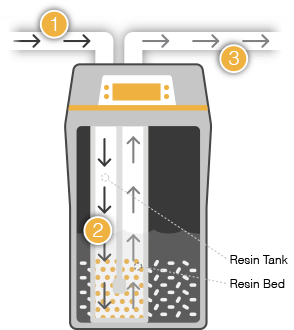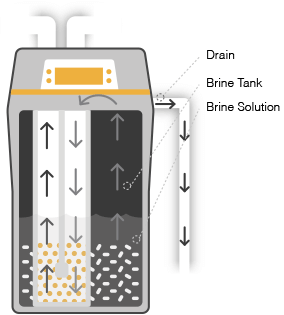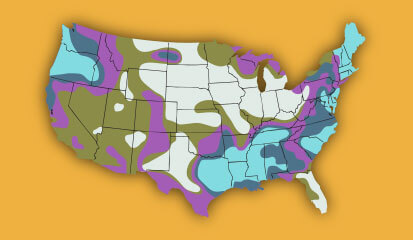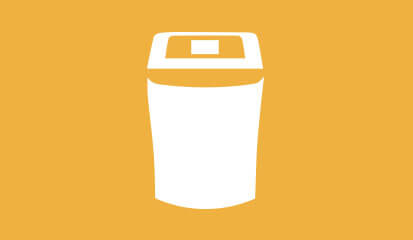Hard Water & Water Softening Systems
Water Softeners and Water Softener Cycles Explained
Hard water can be tough on your home, your skin and your wallet. Water softeners counteract those effects, by creating better quality water that extends the life of your appliances while also helping you and your home look and feel better.
Soft water leads to:
- No embarrassing stains or hard water deposits on tubs and showers
- Quicker, easier household cleaning
- Less spotting on dishes and glassware
- Reduced energy bills (improved water heater efficiency)
- Lathers better while using up to 50% less soap
- Whiter, brighter and softer clothes
- Extended life of water-using appliances
- Smoother, softer skin
How Does a Salt Water Softener Work?
One of the biggest misconceptions about water softeners is that the salt is what softens your water. What actually softens the water are thousands of tiny resin beads within the tank that filter out hard water chemicals. The salt is used to clean the resin beads during a regeneration cycle, allowing the system to continually remove hardness from your water supply.
Here’s a breakdown of how the water softening process works:

Here’s a breakdown of how a water softener works:
- Hard water enters your home from a main water pipe or well, and travels to the water softener.
- Resin beads in the tank attract and hold onto hard water minerals, removing them from the water.
- Softened water exits the tank and flows to the plumbing throughout your home.
The Chemistry of Regeneration
During the softening cycle, sodium on the resin beads is exchanged for hard water minerals in the water. After some time, the resin beads need to be rinsed free of the minerals and “recharged” so they can continue attracting and collecting hard water minerals.
This is the water softener regeneration cycle, and it’s why people add salt to water softeners.
Here are the typical water softener regeneration steps:

- A strong salt-water (brine) solution is created with the salt added to the softener.
- The brine solution flows through the resin tank, rinsing the beads and exchanging new sodium for the hard water minerals that have collected. This is known as the water softener backwash cycle.
- The brine solution and hard water minerals are flushed from the tank into a nearby drain.
- The resin beads are renewed and ready to collect hard water minerals again.
Water softener regeneration cycle time is about two hours. It is not recommended to use water during a water softener regeneration, as hard water will fill the water heater, which could lead to buildup in the equipment.
All Whirlpool® Water Softeners use Demand Initiated Regeneration with Salt Saving Technology so the system only recharges when necessary, saving salt and water. This eliminates the need for a manual regeneration of your water softener. Instead of calculating how often your water softener should regenerate, you can set it and forget, enjoying predictably soft water on a daily basis.


